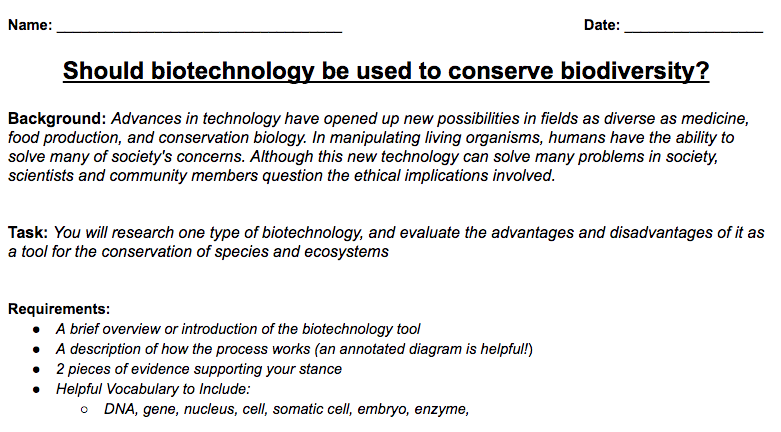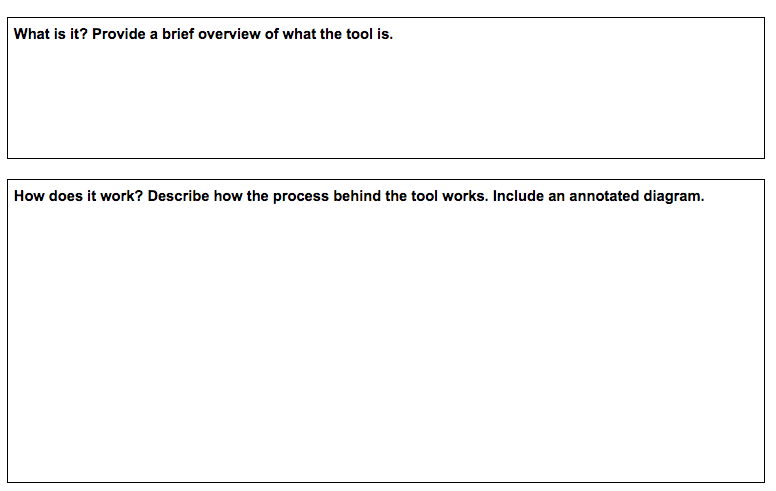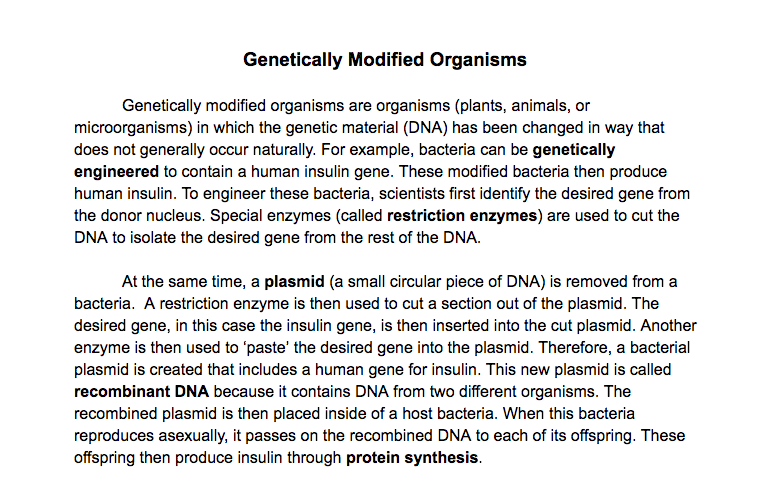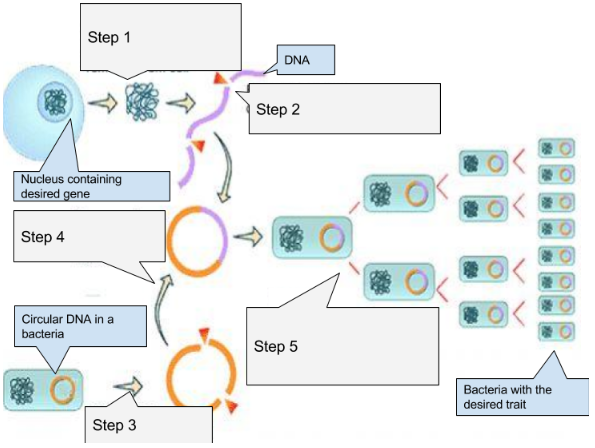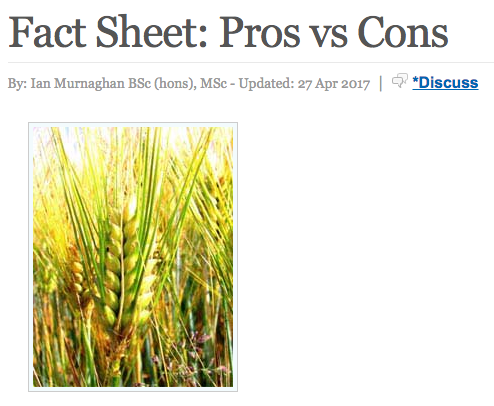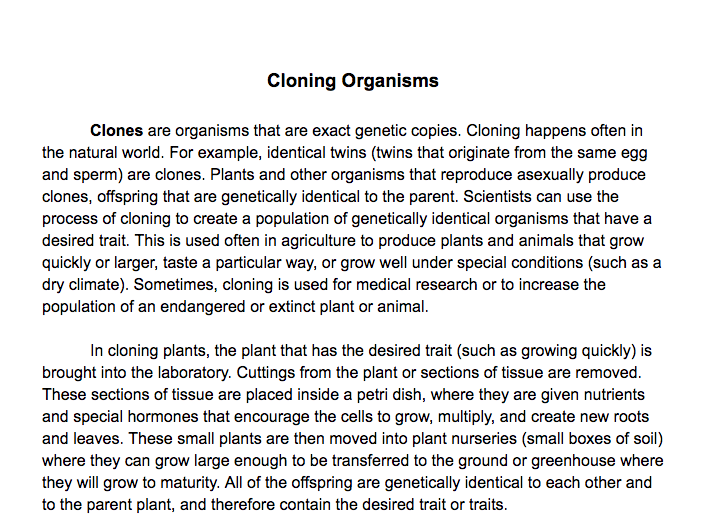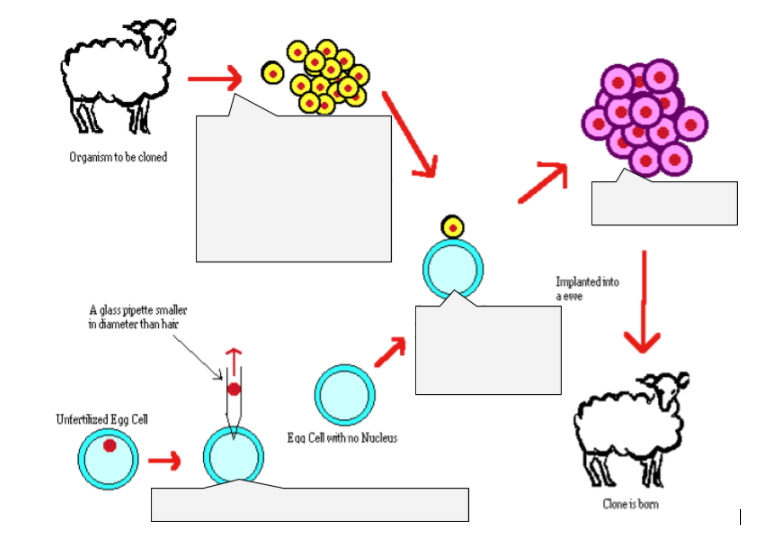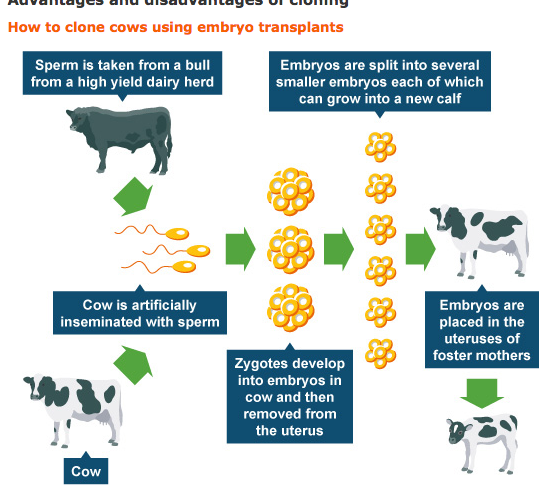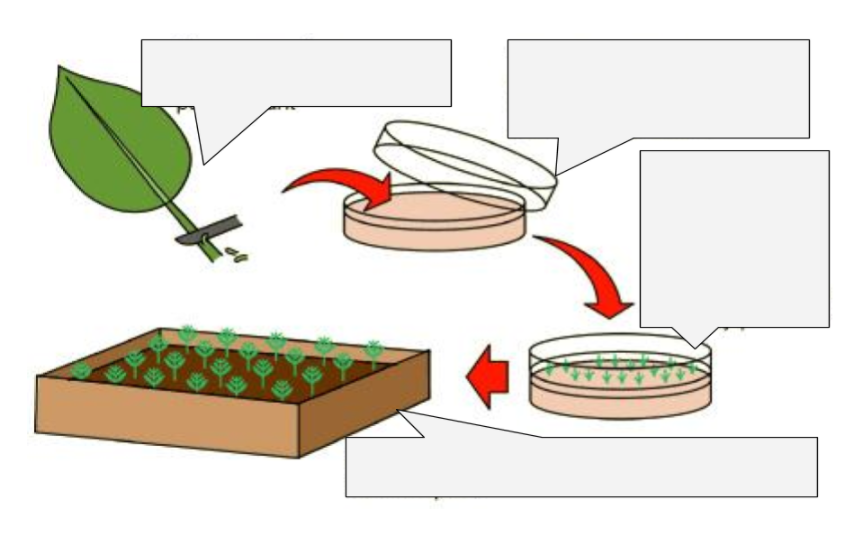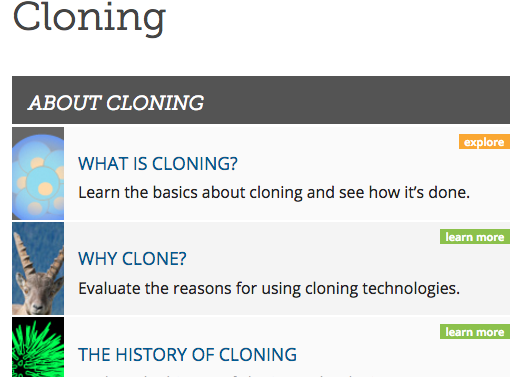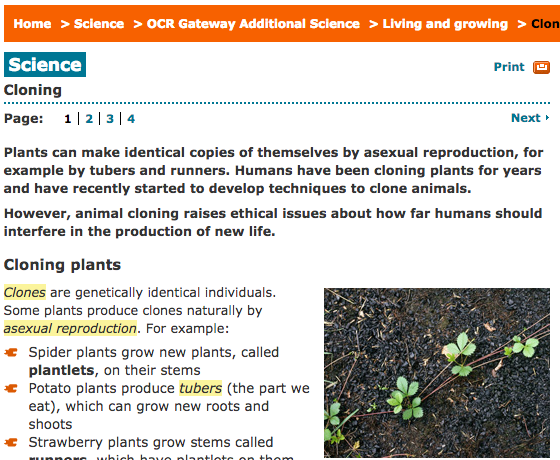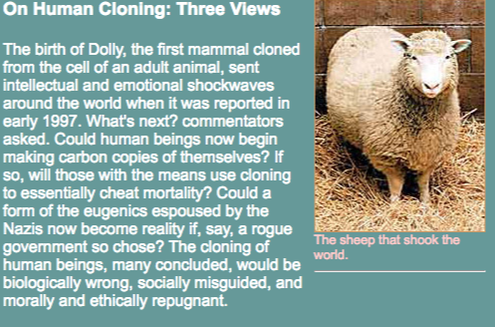Biotechnology: A tool for conservation???
Step 1
Biotechnology is the process by which scientists modify the genetic material or DNA of living organisms so their cells perform new functions. For example, scientists can change the DNA of a banana plant so that it produces bananas are both larger and stay yellow for longer. Although there are many techniques that scientists follow, we are going to focus on Cloning and Genetic Engineering. In order to make an informed decision as to which technique you would like to explore further, you must first learn about each.
Watch the two videos shown below, and complete the first part of your graphic organizer by writing a 3-5 sentence summary of each. Your summary may include a description of what it is and any interesting facts.
Biotechnology is the process by which scientists modify the genetic material or DNA of living organisms so their cells perform new functions. For example, scientists can change the DNA of a banana plant so that it produces bananas are both larger and stay yellow for longer. Although there are many techniques that scientists follow, we are going to focus on Cloning and Genetic Engineering. In order to make an informed decision as to which technique you would like to explore further, you must first learn about each.
Watch the two videos shown below, and complete the first part of your graphic organizer by writing a 3-5 sentence summary of each. Your summary may include a description of what it is and any interesting facts.
|
|
|
Step 2
Once you have decided upon which biotechnology process you would like to focus on, it is time to research it a bit further. Use your graphic organizer or notebook and the resources below as a guide
Once you have decided upon which biotechnology process you would like to focus on, it is time to research it a bit further. Use your graphic organizer or notebook and the resources below as a guide
Genetic Engineering and GMOs
|
|
|
|
|
Genetic Engineering & Cloning
|
|
|
Step 3
Once you have gathered your research, begin to organize it into an argumentative writing piece. As a reminder, here is your writing prompt:
You will research biotechnology as a tool for genetically modified organisms, and evaluate the advantages and disadvantages of it as a tool for the conservation of species and ecosystems. The question you will answer is:
Should biotechnology be used to conserve biodiversity?
Requirements:
Once you have gathered your research, begin to organize it into an argumentative writing piece. As a reminder, here is your writing prompt:
You will research biotechnology as a tool for genetically modified organisms, and evaluate the advantages and disadvantages of it as a tool for the conservation of species and ecosystems. The question you will answer is:
Should biotechnology be used to conserve biodiversity?
Requirements:
- A brief overview or introduction of the biotechnology tool
- A description of how the process works (an annotated diagram is helpful!)
- At least 2 pieces of evidence supporting your stance
- Helpful Vocabulary to Include:
- DNA, gene, nucleus, cell, embryo, enzyme
- DNA, gene, nucleus, cell, embryo, enzyme
